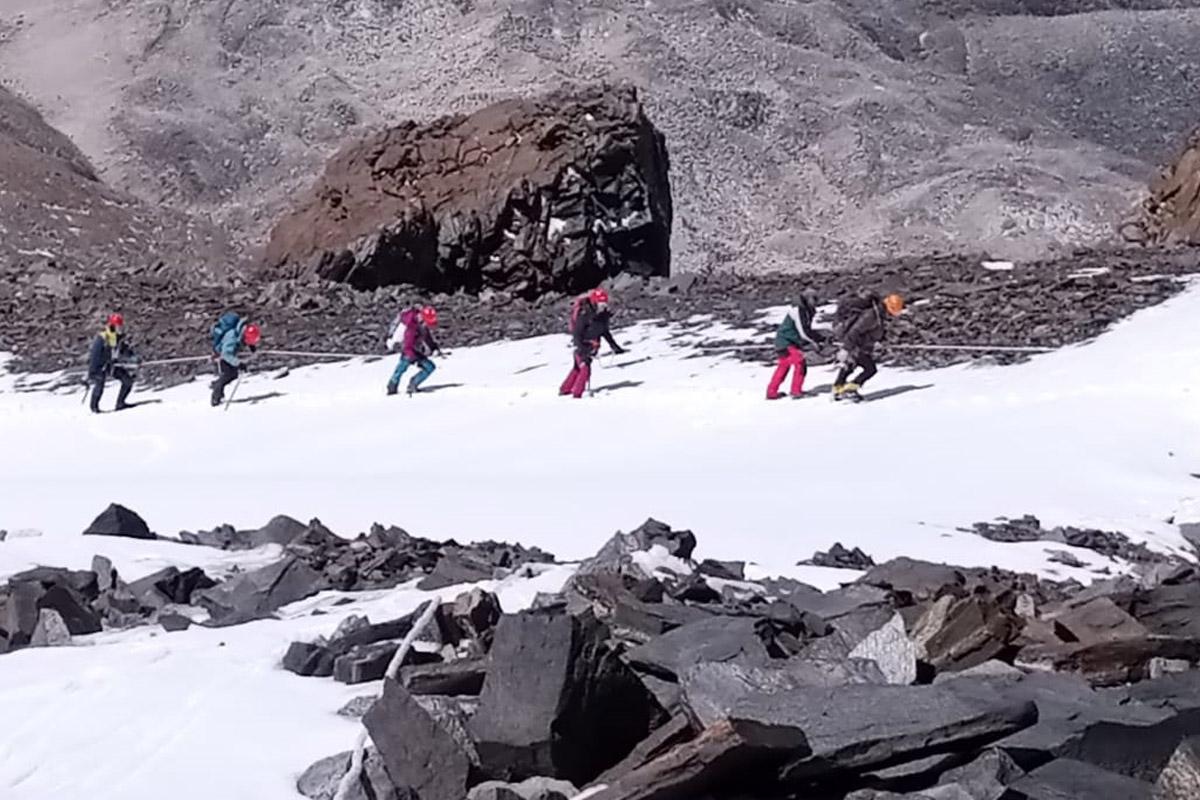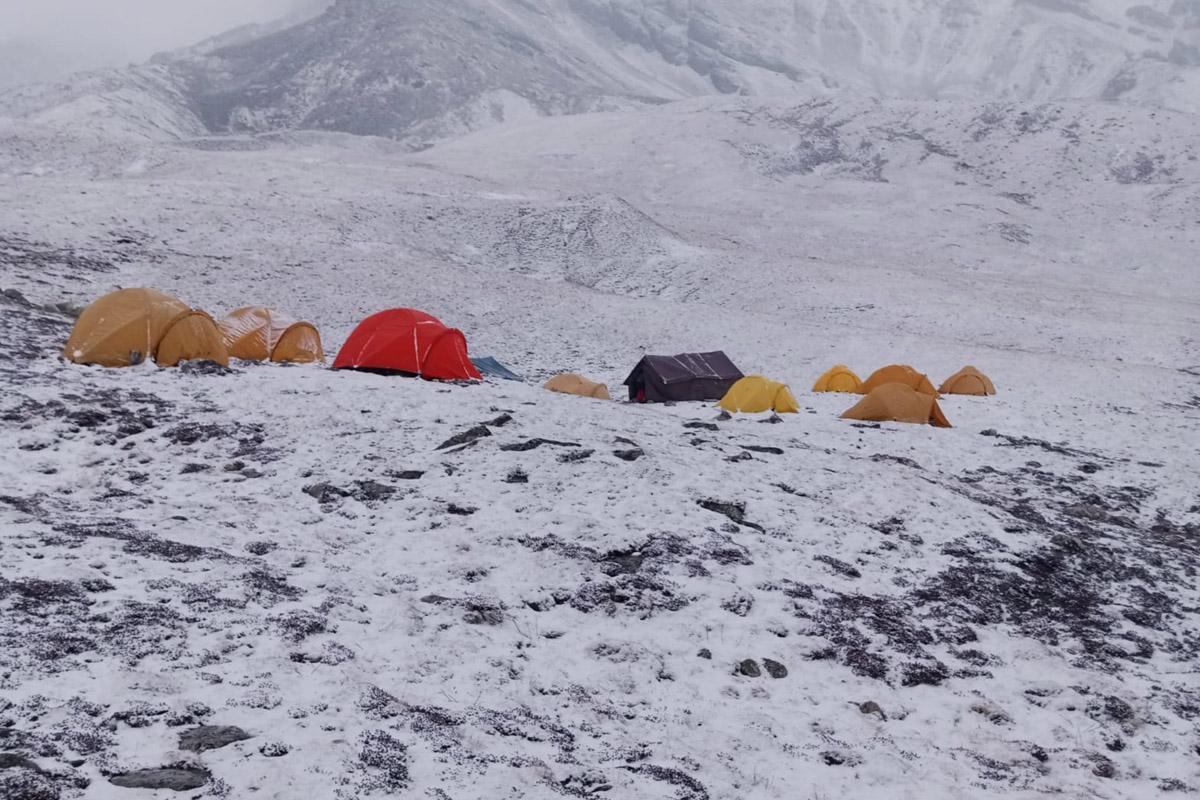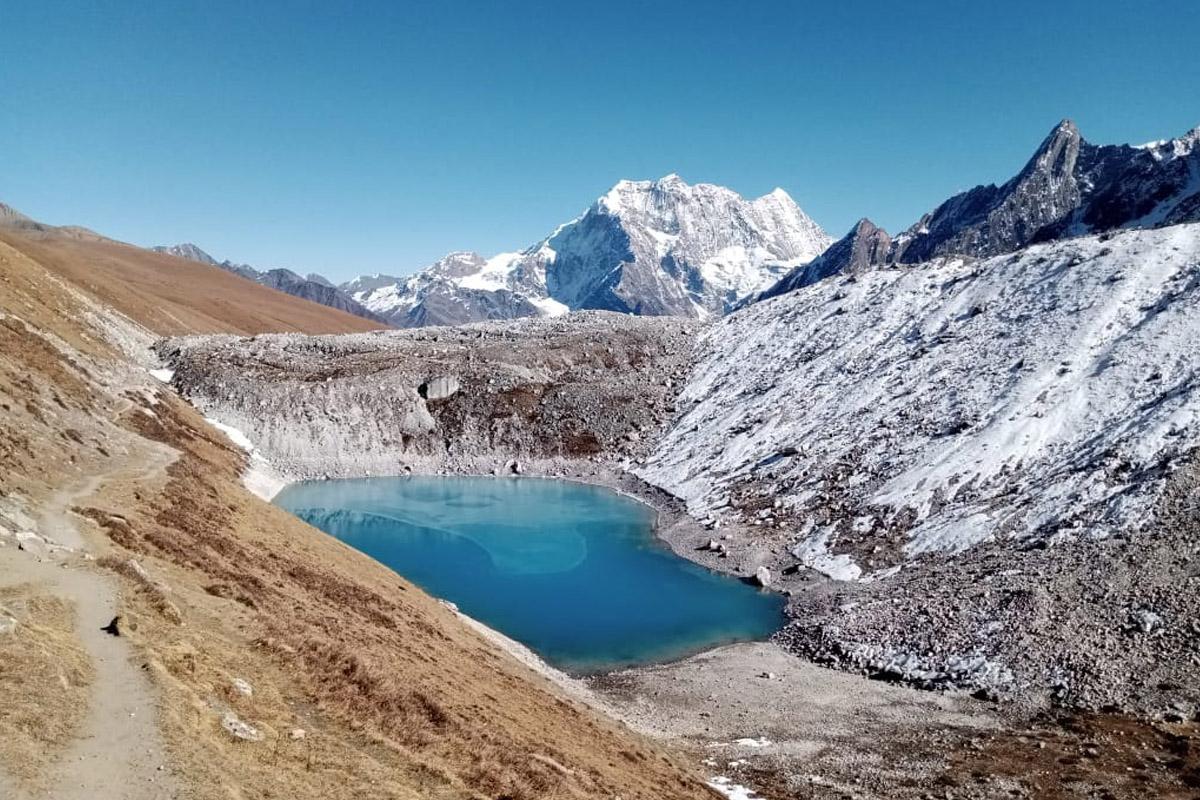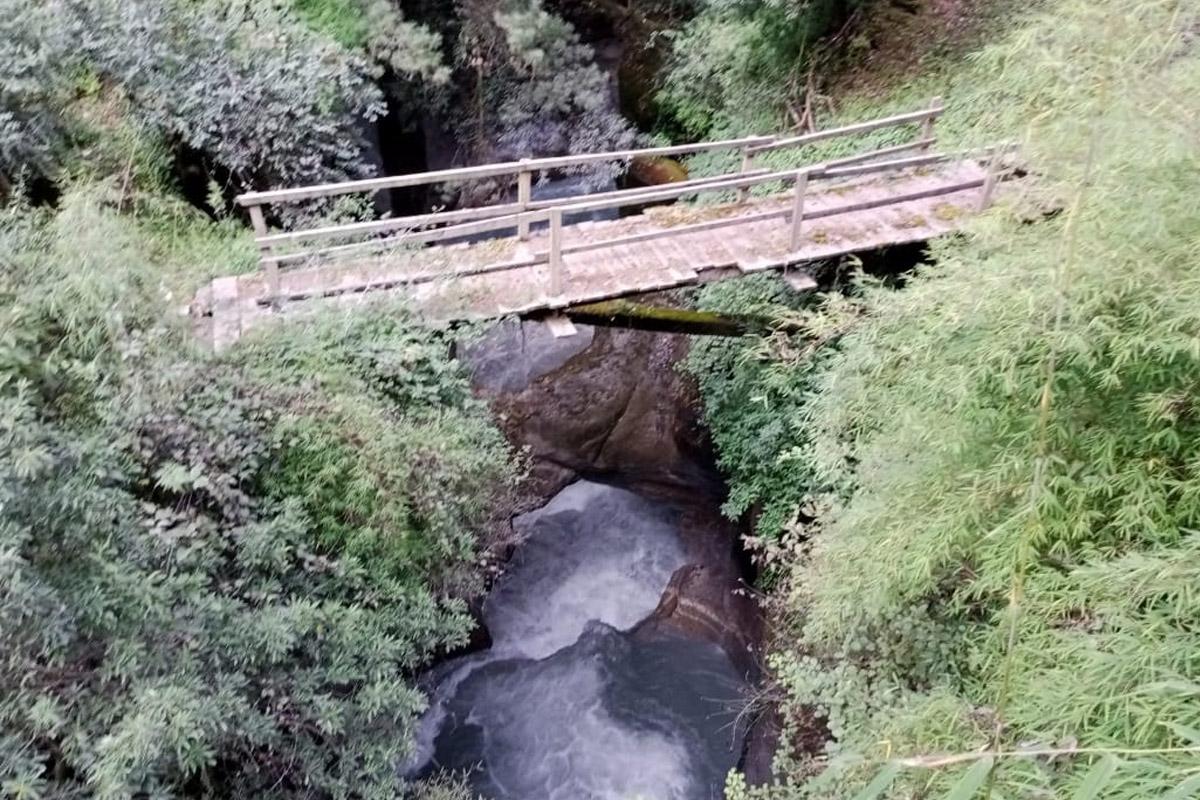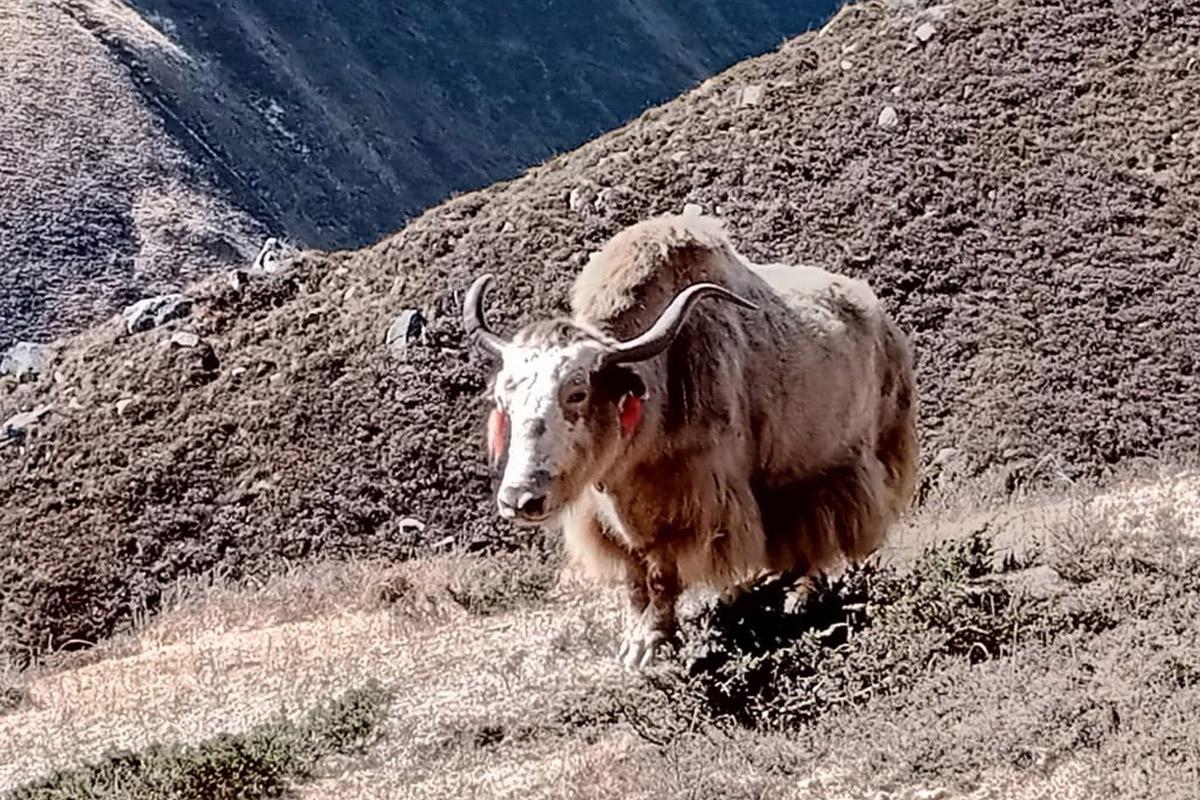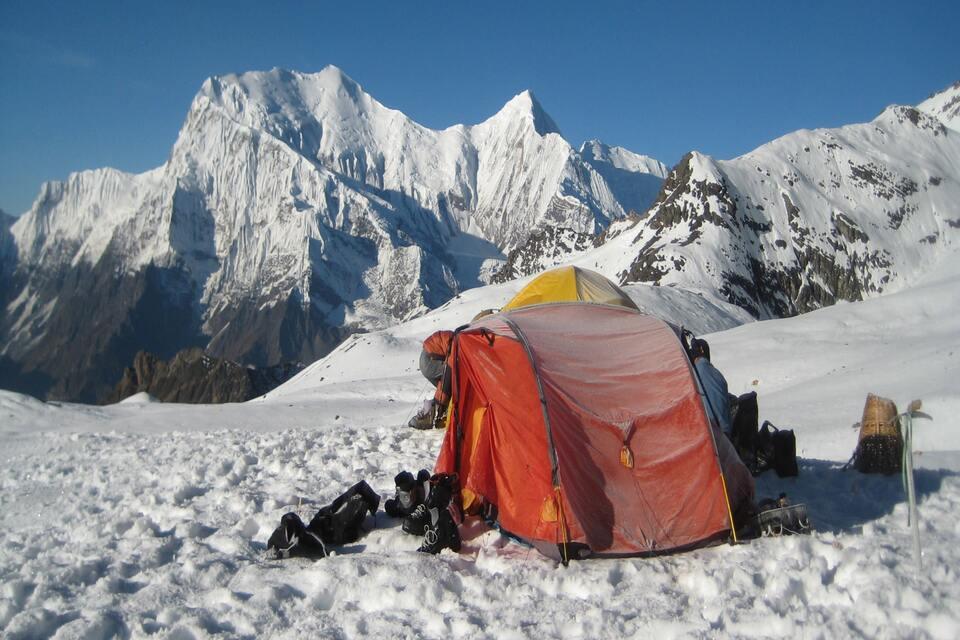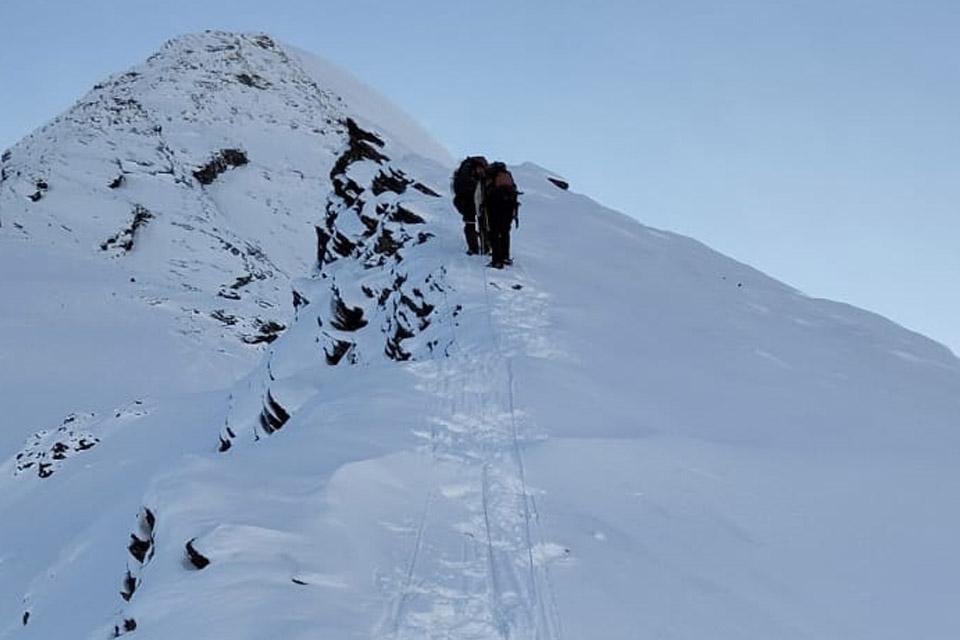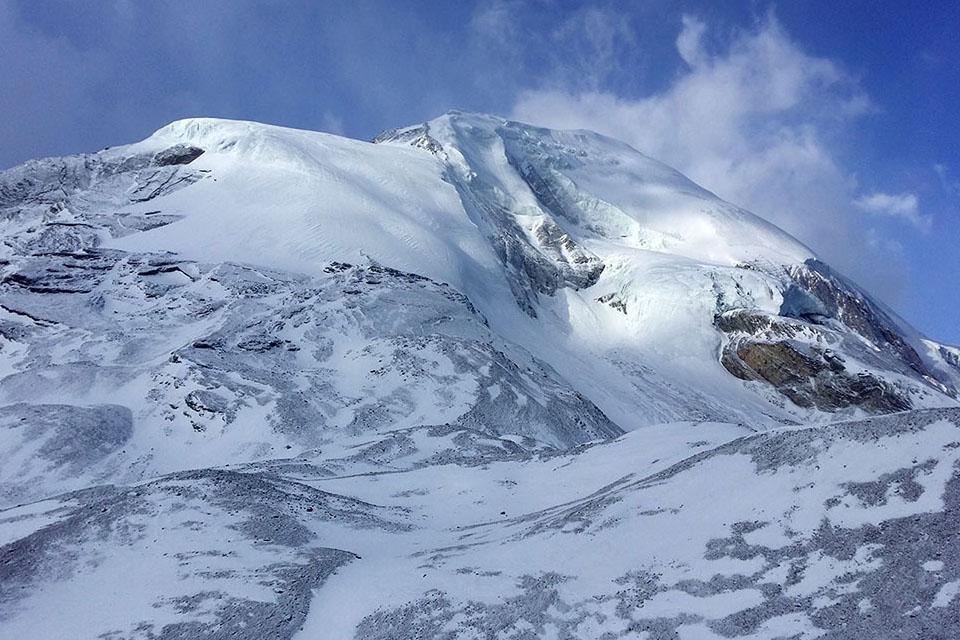Larkya Peak Climbing
Trip at a Glance
Larkya Peak Climbing is a thrilling adventure in Nepal's Manaslu region. Offering breath-taking vistas of Manaslu, Himlung, Annapurna, and the Tibetan plateau, this adventure combines the magnificent Manaslu Circuit trek with an ascent of Larkya Peak (6,416m). Before scaling at the peak, trekkers have to traverse a variety of landscapes, cross rural villages and high-altitude terrain. Larkya Peak climbing is between moderate and challenging. It is appropriate for experienced trekkers who are physically fit and the climb offers a distinctive Himalayan climbing experience.
A more authentic Himalayan experience can be had in the Manaslu region because it is less crowded than other popular trekking and climbing regions. Savor expansive views of Manaslu (8,163m) and the other peaks during the hike, including the stunning views from the summit of Larkya Peak (6,250m). Crampons, ice axes, and ropes are among the essential mountaineering skills needed for the strenuous trek up Larkya Peak. One of Nepal's highest and most picturesque passes, Larkya La Pass (5,106m), is usually crossed during the journey.
Explore traditional villages and engage with local communities to learn about the region's distinctive culture. Trek across a range of environments, including glaciers, alpine meadows, terraced farmland, and lush woodlands. This journey offers a complete Himalayan experience and is combined with the Manaslu Circuit trek.
Larkya Peak Climbing Highlights:
- Experience a remote & authentic trek in the Manaslu region
- Witness spectacular panoramic views of the surrounding Himalayan giants and Mt. Manaslu (8,163m), the eighth-highest summit.
- Ascent of Larkya Peak (6,416m) with a sense of accomplishment upon reaching the summit
- Crossing the iconic Larkya La Pass (5,106m), which offers stunning views of the surrounding mountains and valleys
- Trek through Diverse Landscapes from lush forests and alpine meadows to glaciers and snow fields
- Discover unique cultural experiences in traditional villages, home to a variety of ethnic groups
- A climbing adventure that allows the exploration of Nepal's less-traveled regions
Larkya peak climbing difficulty
While often categorized as a "trekking peak," Larkya Peak South (6,416m) involves technical climbing elements. This includes, especially in some areas, the usage of climbing equipment, including ropes, ice axes, and crampons. Therefore, it is highly advised to have some prior basic climbing experience.
Larkya Peak climbing inherently presents the risk of altitude sickness so a proper acclimatization is crucial. The terrain can be rough and varied, including rocky areas, snow and ice fields, and glacial areas. This calls for a good level of physical fitness and the ability to negotiate difficult terrain. Larkya Peak is located in the Manaslu region, which is comparably remote than the Annapurna and Everest regions. Due to limited access and support, this remoteness may make things more overall challenging.
The weather in the Himalayas is infamously unpredictable. Climbers and trekkers need to be ready for things like snowfall, high winds, and abrupt temperature changes. The ideal individuals for this climb are those who have some climbing and trekking expertise. It is highly recommended to have a good level of physical fitness, understand the high-altitude conditions, and have basic mountaineering skills.
Climbing Larkya Peak is challenging and strenuous and calls for a combination of technical skills, experience, and physical fitness. The secret to a successful and safe climb is proper acclimatization and preparation.
Larkya Peak with Manaslu Circuit
Climbing Larkya Peak and trekking the Manaslu Circuit together make for a unique and all-inclusive Himalayan experience. With this combo, you will enjoy the best of both worlds: the scenically diverse and culturally rich Manaslu Circuit Trek and the challenging and rewarding climb of Larkya Peak.
Compared to the Everest and Annapurna regions, the Manaslu Circuit Trek offers a more authentic and less crowded Himalayan experience. The trek offers a variety of landscapes, including high-altitude alpine mountains and lush subtropical forests. Traditional villages with diverse ethnic communities will offer you unique cultural experiences. The popular Larkya La Pass (5,106m) with spectacular Himalayan panorama is part of the trek.
A challenging and rewarding climbing experience can be achieved by including Larkya Peak in the trek. It offers technical climbing elements that call for the use of climbing equipment and basic mountaineering skills. Larkya Peak summit provides sweeping views of the surrounding peaks and the Manaslu region. It offers a feeling of achievement and adventure.
Best Time to Climb Larkya Peak
Spring (March to May) and Autumn (September to November) in Nepal are the best times of year to climb Larkya Peak.
Spring (March to May)
Clear skies and warmer temperatures are hallmarks of springtime. The weather is often more predictable and the days are longer. Rhododendrons blossom throughout this season, which enhances the attractiveness of the surroundings. The relatively mild weather of spring is characterized by clear skies and stable temperatures. The days are longer and the weather is more consistent. All during this season, rhododendrons bloom, adding to the surroundings' allure. Expect to see more trekkers on the trails during this busy time of year.
Autumn (September to November)
After the monsoon season, autumn brings bright skies and good visibility. In general, the weather is dry and stable. Particularly at higher elevations, the temperature is cooler. Excellent visibility, stable weather, and lower chances of rain are the benefits of spring. There will be more trekkers during this popular period. Night can get really cold.
Regardless of the season, be ready for extremely cold weather at any time of year, particularly at night and at higher elevations. At high elevations, the weather can change quickly. Snowfall is a possibility even in the best seasons, especially at higher elevations. Particularly on the glacier and summit portions, be ready for ice conditions.
Monsoon (June to August)
In monsoon season, the trails become dangerously slippery due to excessive rainfall. Views of the mountains are obscured by clouds. Monsoon isn’t the season for climbing.
Winter (December to February)
Winter climbing is really challenging because of the low temperatures and a lot of snowfall. There might be a lot of teahouses closed.
Larkya Peak Climbing Permits
Manaslu Conservation Area Permit (MCAP): Because Larkya Peak Climbing is situated within a protected area of Manaslu under the Manaslu Conservation Area Project (MCAP), you will require a special permit called RAP (Restricted Area Permit). Larkya Peak and the Manaslu region are both classified as restricted areas. Because the area is close to the Tibetan border, this permit is necessary to protect its sensitive nature and culture.
Annapurna Conservation Area Permit (ACAP): Another is the trekking permit for Annapurna Conservation Area Project (ACAP) as the trek route also touches the Annapurna area. Anyone trekking in Nepal's Annapurna region must have an Annapurna Conservation Area Project (ACAP) permit.
Larkya Peak Climbing Permit: This is the particular permit needed to climb Larkya Peak. The Nepal Mountaineering Association (NMA) is the organization that issues this permit. The Larkya Peak Climbing Permit costs USD250 per person during spring (March-April-May) and USD125 during autumn (Sept-Oct-Nov). A refundable garbage deposit of USD500 is required to issue the climbing permit. All of the permits, including climbing staff insurance and garbage deposit, are handled by your travel agent.
Larkya peak climbing permits price
1) MCAP permit fee for foreigners: NPR 3,000 (Approx. USD22)
2) ACAP permit fee for foreigners: NPR 3,000 (Approx. USD22)
3) Trekking Information Management System (TIMS) card permit: NPR 2000 (Approx. USD15)
4) Royalty for Foreign climbers for Larkya peak (per person in US dollar)
Spring (March-April-May) USD250
Autumn (Sept-Oct-Nov) USD125
Winter (Dec-Jan-Feb) USD70
Summer June-July-Aug) USD70
5) Manaslu Special Permit Cost (RAP)
September – November
USD 100 per person / week
USD 15 per person / day (beyond 1 week)
December – August
USD 75 per person / week
USD 10 per person / day (beyond 1 week)
6) Garbage deposit USD500 (Refundable)
Tips for climbing Larkya Peak summit
Planning and preparation are essential for climbing Larkya Peak. Larkya Peak is a challenging climbing mountain. It calls for careful planning, technological skills, physical fitness, and logistical preparation.
1) To build endurance, do aerobic exercises on a regular basis, such as swimming, cycling, or running. You should focus on exercises for leg strength that should include step-ups, lunges, and squats. To acclimate your body, try to train at higher altitudes. Go for hiking with a weighted backpack and on uneven terrain.
2) Ascend gradually throughout the hike to give your body time to adjust to the higher altitude. The itinerary should include rest days, particularly while trekking to higher altitudes. You should stay hydrated by drinking lots of water. Keep an eye out for any signs of altitude sickness and, if need, descend.
3) Bring layers of warm clothes, especially outerwear that is windproof and waterproof. Climbing boots should be waterproof, high-quality footwear. Make sure you have ropes, a helmet, a harness, an ice axe, and crampons. Bring a sleeping bag that is warm enough for chilly weather. Keep a complete first-aid kit on hand, along with medication for altitude sickness. At high altitudes, shield your skin and eyes from the intense sun with sunglasses and sunscreen.
4) Learn the basics of climbing, such as how to use ice axes and crampons. For safety, practice on harnesses and ropes. Trek with an experienced guide who is familiar with Larkya Peak.
5) Eat a diet that is well-balanced and high in protein and carbohydrates. Stay away from caffeine and alcohol and drink lots of water. Keep energy snacks on hand to keep your energy levels up.
6) For mental preparation, remain focused and have a positive attitude. Don't hurry the ascent; instead, be patient. Encourage one another and work as a team.
7) Follow the safety procedures and the guidance provided by your guides. Share any symptoms or symptoms with your guides.
Itinerary
Day 01: Arrival in Kathmandu (1,400m)
Day 02: In Kathmandu - Climb preparation
Day 03: Drive from Kathmandu to Jagat (1,300m) 9/10 hrs
Day 04: Trek from Jagat to Deng (1,860m) 6/7 hrs
Day 05: Trek from Deng to Namrung (2,900m) 7/8 hrs
Day 06: Trek from Namrung to Samagaon (3,520m) 6/7 hrs
Day 07: Acclimatization Day at Samagaon (3,520m)
Day 08: Trek from Samagaon to Dharmasala (4,460m) 6/7 hrs
Day 09: Trek from Dharmasala to Larkya Peak Base Camp (5,170m) 5/6 hrs
Day 10: Trek from Larkya Base Camp to Larkya Peak High Camp (5,650m) - 5-6 hrs
Day 11: Larkya Peak High Camp - Summit Peak Larkya Peak North (5807m) or Larkya Peak South (6,416m) and back to Base Camp (5,170m) - 7-8 hrs
Day 12: Trek from Base Camp - Cross Larkya Pass (5,106m) - Bimthang (3,720m) 7/8 hrs
Day 13: Trek from Bimthang to Gowa (2,515m) - 5 hrs
Day 14: Trek from Gowa to Dharapani (1,860m) - 4 hrs & drive to Besisahar (760m) - 4 hrs
Day 15: Drive Besisahar to Kathmandu (1,400m) 8-9 hrs
Day 16: Final Departure
Upon arrival in Kathmandu, you will be greeted by our team at the airport and transferred to your hotel. After check-in, you can rest or explore around. In the evening, we will have a briefing about the trek and check your gear.
Today is a climb preparation day for equipment/gear check, shopping or renting for personal climbing gear.
Take a long but scenic drive from Kathmandu to Jagat. The journey takes us through the picturesque countryside, terraced fields, and riverside settlements.
The trail takes us through subtropical forests and along the river gorge. We ascend gradually, crossing multiple bridges and walking past villages like Philim and Ekle Bhatti. After a final push, we arrive at Deng.
The trail continues through dense forests and terraced fields, offering views of Shringi Himal. We pass through villages like Bihi and Ghap before reaching Namrung, where we get our first glimpses of Manaslu.
We pass through rhododendron forests and charming villages, with views of Manaslu and Ganesh Himal. Continuing on an easier trail, we walk through Shyala village, enjoying breathtaking views of Himal Chuli, Ngadi Chuli, and Manaslu. We then arrive in Samagaon, the gateway to Manaslu Base Camp
A day for rest and acclimatization. We can explore the village, visit Pungyen Gompa, or take an optional hike to Manaslu Base Camp (4,800m).
Ascending gradually, we trek through yak pastures and barren landscapes, crossing the Budhi Gandaki River before reaching Samdo, a Tibetan refugee village. A short but high-altitude trek, we cross ridges and moraines while ascending to Dharmasala, the base for Larkya Pass.
Leaving Dharmasala, we gradually ascend to Larkya Peak Base Camp, walking on rocky terrain and glacier moraine. We set up camp and prepare for the climb.
A challenging ascent on steep, snowy terrain takes us to High Camp. We spend the night in a tent and prepare for the summit push.
We start early for the summit attempt. Using climbing gear, we ascend to the summit of Larkya Peak (6,416m), enjoying spectacular views of the surrounding peaks. After spending some time at the top, we descend back to Base Camp.
A tough but rewarding day as we cross Larkya La Pass. We then descend to Bimthang, surrounded by stunning Himalayan views.
We descend through rhododendron forests, passing yak pastures and crossing wooden bridges before reaching Gowa, a small settlement.
A pleasant walk through forests and traditional villages brings us to Dharapani, where we reconnect with the Annapurna Circuit trail. We take a jeep ride to Besisahar and check in to the lodge.
We take a jeep ride to Besisahar, followed by a drive back to Kathmandu. Upon arrival, check in to the hotel and enjoy a farewell dinner.
After breakfast, transfer to the airport for your departure flight. Safe travels and we hope to see you again!
What is included?
- Airport pick-up and drop services.
- Hotel accommodations in Kathmandu with breakfast on Twin Share Basis.
- Kathmandu/Jagat & Besisahar/Kathmandu transfer by private vehicle (Dharapani/Besisahar by local jeep).
- All trekking accommodations with Breakfast/Lunch/Dinner at local lodges & tents on twin sharing basis.
- A comprehensive medical kit (will be carried by the trekking guide)
- Experienced government-licensed climbing guides & porters (1 porter for two people) including their food, accommodation, & salary.
- Group climbing gear (climbing rope, ice screw, snowbar, rock pition, carabiner).
- Four seasonal sleeping bags and duffel bags (to be returned after trip completion)
- All camping equipment required during the climb (sleeping tents/mattresses, kitchen tent, kitchen equipment).
- Personal insurance for climbing/trek crew.
- Manaslu Special permit, Manaslu Conservation entry permits, Annapurna Conservation entry permit & TIMS Card.
- Larkya Peak Climbing Permit.
- Larkya peak climbing guide’s summit Bonus.
- All government and local taxes.
- Farewell dinner with Nepalese cultural program.
What is not included?
- International airfares.
- Nepal entry visa fee – Visa can be obtained upon your arrival at the Tribhuvan International Airport in Kathmandu. (USD30 for 15 days)
- Lunch & dinner in Kathmandu.
- Personal travel insurance.
- Emergency rescue evacuation (to be covered by the client's travel insurance).
- Other expenses of a personal nature (phone calls, laundry, battery recharge, bottle or boiled water, hot shower etc.)
- Personal climbing gear
- Bar bills, alcoholic drinks & beverages.
- Garbage deposit fees (refundable).
- Tips.
Equipment
Climbing equipment provided by the company.
- Fixed Rope
- Dynamic Rope
- Snowbar
- Rock Pition
- Ice Screw
- Unlock Carabiner
- Lock Carabiner
- Tents/Kitchen equipment
Personal Climbing gear (To be rented/bought)
- Climbing boots
- Ice axe (if necessary)
- Harness
- Crampon
Trip Info
Accommodation
While you are in Kathmandu, we opt to accommodate you in 4- or 5-star hotels like Hotel Royal Singhi (4-star), Hotel Manaslu (4-star), Radisson (5-star), Yak & Yeti (5-star), or similar. During the trek, you will be accommodated in a local mountain lodge, better known as Tea House. These lodges and teahouses provide good services and are equipped with basic amenities. During the climb, we will provide top-quality camping equipment, including premium member tents, a spacious dining tent, and a hygienic toilet tent. We will endeavor to provide you with the best accommodation available along the route so that you get a good night’s rest in a hygienic milieu.
Meals
We never compromise the quality of food or the health of the trekkers as well as the crew members. Generally, we opt for the fresh and nutritional local community food available. You could make your delicious pick from an array of traditional foods like Sweet potatoes, buckwheat barley, etc. This way, you could not only get a real sense of the local culture and life patterns but also contribute to promoting the locally available resources of organic food and beverages. Besides, a wide range of Continental, Chinese, Italian and Indian cuisines like Pizza, Spaghetti, French Fries, Soups, Breads, Masala curry, etc. are also available in the restaurants for your retreat. During the camping, our experienced cook will prepare nutritious and hygienic meals for you.
Acclimatization
Altitude sickness is a serious risk while trekking in the Himalayas. It's important to acclimatize properly by spending a few days at lower altitudes before heading higher. By spending time at lower altitudes before pushing higher, your body has time to adjust. Our trekking packages have enough acclimatization days planned where you'll be spending a day or two at lower altitudes, allowing your body to adjust to the increasing altitude.
Electricity & drinking water
For an additional cost, you can use the electricity in all tea houses and lodges to recharge your batteries. The lodges have packaged mineral water for sale, or you can fill your bottle with boiling water. To make water drinkable, you can use water purification tablets too. But, due to hygienic issues, you should avoid drinking water from taps, rivers, or wells in trekking areas.
Communication
At high elevations, phone calls are the only means of connection. Our office in Kathmandu is in constant communication with your trek guide. In Kathmandu, you can purchase a local sim card for communication purposes. At high elevations, the mobile signal might not be as strong, though.
Luggage
Our porters are paired with one trekker for every two hikers, and one porter can safely carry 30 kg maximum weight. Therefore, we advise you to fill your duffle bag not more than 15 kg with your belongings. You may carry a small backpack with your valuables and informational documents. The things you are not taking along on the trek can be stored in a hotel in Kathmandu free of cost.
Typical Trek Day
Mostly your trek day starts with breakfast at 7-8 am, followed by a 3-4 hour morning trek. Lunch break is around an hour, then you continue trekking to your destination for the day. After reaching the teahouse lodge, you can relax, explore nearby areas, and enjoy dinner at 6-7 pm. Evenings involve socializing, a trek briefing, and leisure activities before bed.
Travel Insurance
It is advised that you arrange your travel insurance before leaving your homeland. The main thing is to make sure that your insurance covers you for both- medical and evacuation costs. Having travel insurance with you makes your trip secure and hassle-free.
Our Guides
Guides play a significant role during the trek. They are the ones who literally decipher the trekking codes for you so that you can actually connect with nature, culture and people along the way. We have helpful and dedicated trekking guides who are very well-versed in the culture, life patterns and every single detail pertaining to the trek region you are traveling in. Thus, in the company of our professional Sherpa guides, your trek becomes not only entertaining but also equally informative.
Porter and Staff Care
When it comes to high-altitude trekking, porters and staff members make up a pivot. Marron Treks ensures that all the porters and staff members going to high altitudes are provided with adequate clothing and equipment. All our field staff are covered by insurance.


